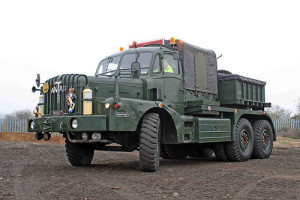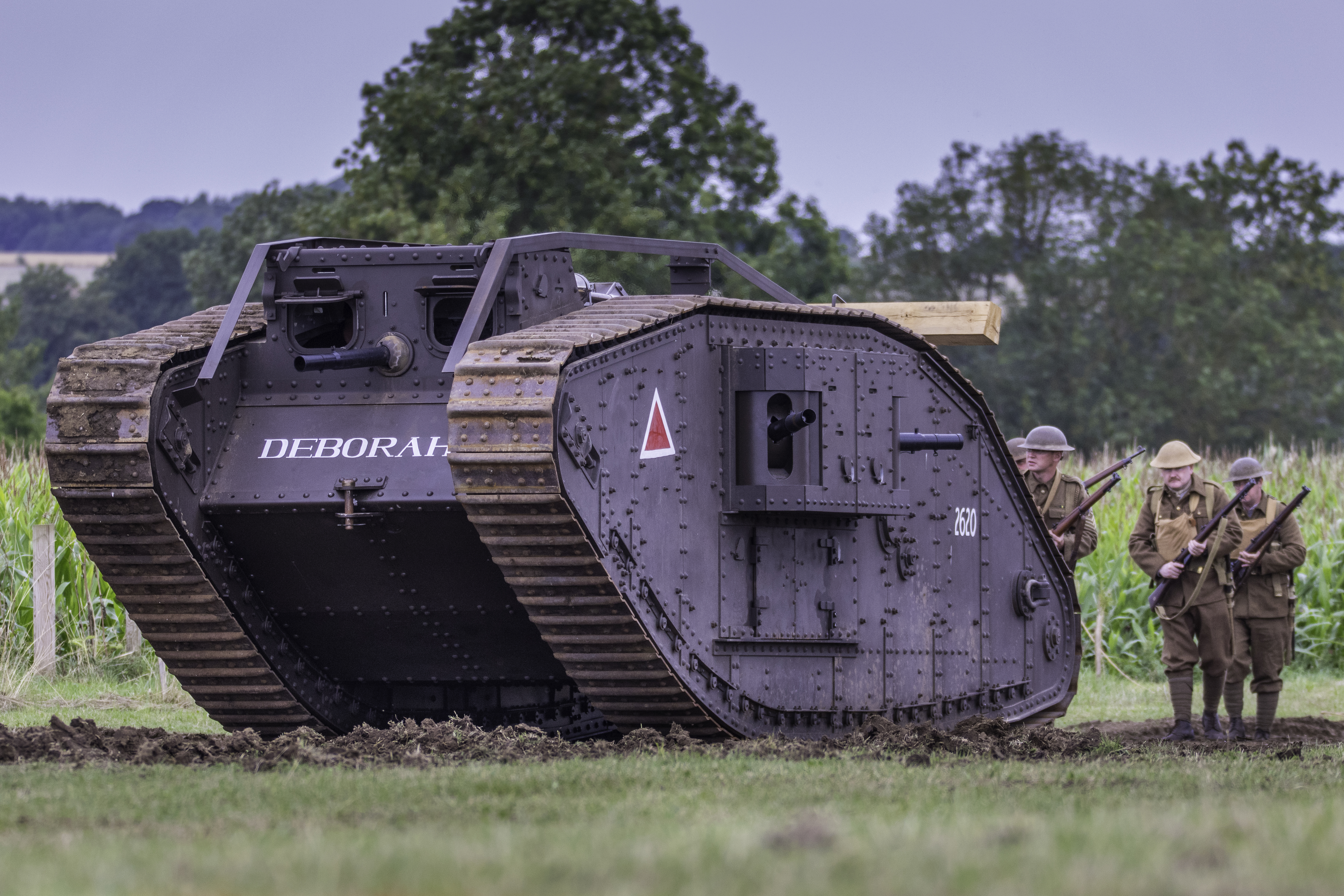THORNEYCROFT MIGHTY ANTAR

Mighty Antar Mk 3
The Thorneycroft ANTAR was designed in the 1940s and the Mk 1 first entered service in 1951. The name Antar was intended as a flattering gesture to the primary customer for the vehicle, the Anglo-Iranian Oil Company. “Antar Ibn Shadded” was a pre-Islamic poet-warrior.
Mighty Antar was the standard tank transporter for the British Army for decades, It had 10 wheels on 3 axles, 2 drive axles at the rear each with 2 pairs of wheels, the front axle, doing the steering was un-driven. The Antar was designed from the beginning as an off-road, heavy haulage vehicle.
Mk 1 Mighty Antar was a fixed steel body based tractor unit powered by a V8 Meteorite engine built under licence by the Rover car company. The Meteorite was a cut-down version of the Rolls Royce V12 Meteor used in the Centurion tank family which was itself a version of the Merlin aero engine. The first Antars entered British Army service as FV12001, Tractor 30 ton GS 6X4 and were paired with the Dyson FV 3601 trailer used to carry the new, heavy, Centurion tanks.
Mk 2 Mighty Antar was basically a refined Mk1 moving of the two 100 gallon fuel tanks to side of the chassis, the ballast body was made demountable and a fifth wheel fitted for towing the new 16-wheeled FV 3001 semi-trailer of 60 tons capacity. A 20 ton winch was added behind the cab to assist in loading the trailer.
The Antar Mk3 entered service in the early 1960s to cope with the increasing weight of the Centurion Tanks and the projected Chieftain models. These were the last Antars in service and were used up until the mid-1980s. The Mk3 replaced the Meteorite engine with a Rolls Royce C8SFL, 16.2 litre, inline 8 cylinder, supercharged diesel power unit developing 333 bhp, this allowed for a much narrower bonnet making the Mk3 easily distinguished from its predecessors. Whilst still being able to tow the 50ton Dyson trailer, by removing the demountable ballast box it could tow the 60ton semi-trailer.
The maximum speed was 35 mph and with a Chieftain tank on board the all up weight was 112 tons; they were road tested to 126 tons.











